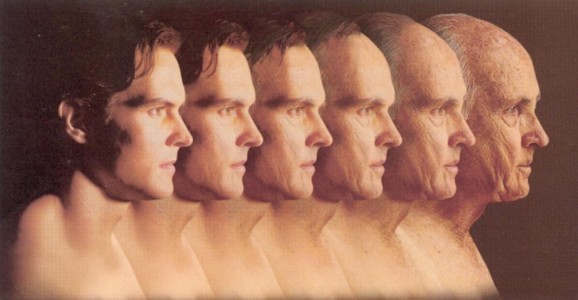Want To Know What Your Babies Will Look Like When They Grow Up?
This article is more than 2 years old
 Could the ugly duckling’s parents—or tormentors—have known that it would grow up to be a swan? If they had this new face aging software, they might have been a little nicer to the duckling right out of the gate.
Could the ugly duckling’s parents—or tormentors—have known that it would grow up to be a swan? If they had this new face aging software, they might have been a little nicer to the duckling right out of the gate.
Two University of Washington computer science and engineering professors developed this software that, in approximately 30 seconds, takes an image of a child’s face and predicts what that kid will look like over the years, stopping at age 80. The new program doesn’t just randomly guess, it actually takes into account facial expression and pose. Using thousands of photos of kids and adults, it came up with a basic aging prototype for both genders. It determines from online photos how much and in what ways faces change over time, and applies those textures, shape, and shades to the photo in question. Eventually, the duo hopes to integrate ethnicity, the change in hair color over time, and wrinkles.
If you’ve ever watched a TV crime drama, you’ve probably seen some kind of facial recognition/prediction software spit out potential images of a suspect based on descriptions or old yearbook photos. This technology isn’t so different, but works better, and could potentially revolutionize police searches for missing children or criminals. It’s tough to generate aging photos from one single image, but the professors maintain that their program “works remarkably well.” In a test, they used actual photos taken during the lives of 82 people. They asked random participants to select the correctly aged photo for each childhood example, and they chose the images rendered by their program as often as the real ones. The developers say the results “are so convincing that people can’t distinguish them from reality.”
Google and Intel provided the funding for this project. Care to guess why? I’ll give you a hint, it has to do with pattern recognition—the IEEE Computer Vision and Pattern Recognition conference will feature the research. If you’ve been watching Cosmos, you know that pattern recognition is one of humanity’s greatest and most fruitful abilities. But it’s not just a human trait anymore. Pattern recognition is a key aspect of deep learning, a technology used by Facebook, Google, and Microsoft. It’s used to help artificial intelligence programs identify objects in photographs and videos to help with targeted news feeds and advertising. All we need is for Facebook to know what we’ll look like in 10 or 20 years, right?












